“Shedding” of the Covid vaccine Part 4: HOW is it happening? And, what outcomes have been seen in babies exposed in pregnancy and nursing?
Going back to explain the mechanisms, from Dr. Pierre Kory’s earlier articles, and shocking examples of Pfizer concealing grave harm to infants.
BS”D
If this article does not show up in its entirety in email, please click the title to read it online.
Previously, we showed extensive clinical evidence of illness resulting from “shedding” of covid vaccine components.
In this piece, I attempted the difficult task of condensing three very science-heavy articles of Dr. Kory’s (his Parts 2, 3, and 4) showing how shedding is happening, and how babies are being affected, into one, shorter segment.
First, an overview of Dr. Kory’s shedding series Parts 1-4, taken from his summaries:
The FDA and the EMA define the vaccines as gene therapies.
The FDA requires that gene therapy products undergo shedding studies given the known risks of shedding. Gene therapy products are required to undergo both animal and human shedding studies (the latter were not done and the results of the former have not been made public by Pfizer).
Shedding studies were not done because, even though the vaccines are gene-therapies, they legally fell under the legal definition of a “countermeasure” in a public health emergency. Countermeasures do not require shedding or other types of safety studies before mass use.
All we know is that from a FOIA obtained document, Pfizer did a shedding study on rats, but we don’t know what they found.
The vaccine components are delivered to the cell via lipid nano-particles and LNP’s are distributed widely in the body.
Pfizer specifically excluded subjects who could be closely exposed to a trial subject that had already received the vaccine.
The gene therapy product called Luxterna has a warning on its insert that the product can be shed via tears and nasal secretions.
All vaccine components distribute widely in the human body (contrary to promises of remaining localized in the arm) and for prolonged periods.
Numerous studies have demonstrated that synthetic LNP’s containing genetic material or drugs can be absorbed by various routes including intranasal, transcutaneous, transfollicular, transdermal and inhalation via the lungs.
LNPs retain their biologic activity after being absorbed no matter what route is used.
Below, the mechanistics of shedding are explained in much greater detail. I hope Dr. Kory forgives me for leaving out entire sections of each of the three articles I combined here. I took the liberty of very light occasional editing of paragraphs in some instances. The links to his original articles are at the end. I salute Dr. Kory for this series, which is a masterpiece.
By Dr. Pierre Kory (Shortened by BW.)
HOW DOES SHEDDING OCCUR?
In order for the vaccine to be shed, it would first require distribution of the vaccine components to the lungs (to then be exhaled) and other body fluids (to then be excreted.)
To explore this possibility, it is important that we define what a lipid nanoparticle (LNP) is.
The papers I reviewed used the terms exosomes, LNP’s, EV’s, and even nanoparticles somewhat interchangeably although there are some differences.
Further, there are different biologic materials that can be used to make the outer membrane enclosing the contents of a nanoparticle. Lipids (i.e. liposomes or LNP’s) are one of the most commonly used for drug delivery. Early conventional “liposomes” (yet another term) had limitations such as short half-life and rapid systemic clearance following their clearance by the reticuloendothelial system (RES). However, the conjugation of polymers such as polyethylene glycol (PEG) resulted in the generation of sterically stabilized liposomes with prolonged half-life and increased stability.
The Covid mRNA vaccines used PEG to stabilize the LNP carrying the modified mRNA.
So what are nanoparticles/LNPs/exosomes, what is inside them, and what do they do?
Basically, they are tiny sacs enclosed by a lipid membrane which can contain any of the following: proteins, metabolites, enzymes, growth factors, and nucleic acids. You can also package drugs (and synthetic mRNA) into them in order to deliver their contents into recipient cells to effectively alter their biological response.
So what do we know about human biodistribution of synthetic LNP’s??
From this article by Sonia Elijah, regulators knew LNP’s distribute widely in the human body:
In the recent leaked letter by the EMA, Executive Director, Emer Cooke, to the Chair of COVID-19 Special Committee, MEP Kathleen Van Brempt, Cooke begrudgingly admitted, “that the lipid nanoparticles can distribute rather non-specifically to several organs such as liver, spleen, heart, kidney, lung and brain, with the liver appearing to be the organ where the lipid nanoparticles distribute most.”
Her admission was made on the heels of the Therapeutics Goods Administrations (TGA) of Australia’s evaluation report on Pfizer’s nonclinical biodistribution study, which alarmingly revealed that the lipid nanoparticles which encase the mRNA, travel to the liver, spleen, brain, eyes, bone marrow, adrenal glands, ovaries and testes– nearly every organ tissue.
LNP’s or their natural equivalent, exosomes (a.k.a. extracellular vesicles (EVs)) are able to be excreted through body fluids (sweat, sputum, breast milk) and to pass the transplacental barrier. These exosomes are also able to penetrate by inhalation and through healthy or injured skin as well as orally through breast milk.
This figure from a review paper on nanoparticle therapies is illuminating:
If that isn’t concerning enough, it gets worse.
The above paper from 2017 states:
Due to their unique characteristics, nanoparticles are widely used in biomedical and industrial applications (Lee et al., 2007; Zhang et al., 2008;Das et al., 2009; Vance et al., 2015). Currently, there are 1,814 marketed consumer products containing nanoparticles, including antibiotics, food items, textiles, sports tools, and electronic materials, and the number is increasing steadily.
Good to know (and unsurprising) that as of 2017, the human race has 1,814 consumer products out there relying on the use of nanoparticles and we have no comprehensive understanding of what the short or long term risks of both the absorption into our bodies and or the risk of secondarily shedding the nanoparticles onto other humans, in particular our families, friends, and others.
It is shocking that in a number of review papers on nanoparticle technology, in each one, statements like this appear: “it is clear that more studies are needed to determine the mechanisms by which NPs affect particular organ systems.”
Equally prevalent are statements such as the below from this review paper:
Despite the potential for clinical application, some studies have suggested that NPs can be toxic. These studies have demonstrated the ability of NPs to accumulate in cells and induce organ-specific toxicity. These studies, combined with the ever-increasing human exposure, demonstrate an urgent need for the design of safe NPs and the development of strict guidelines for their development with regards to toxicity testing.
Urgent need to design safe nanoparticles? Strict guidelines needed for development in regards to testing for toxicity? Bit late for that now given “we” injected transmissible nanoparticles into the bodies of billions of people of all ages across the world.
Before we get into the studies demonstrating the passing of vaccine components from vaccinated to the unvaccinated via various routes, know that Pfizer knew that shedding was a possibility given that they specifically excluded people “exposed” to the vaccine via inhalation (not subtle) or skin contact:
Starting on p. 67 of the protocol the investigator is instructed to report various "environmental exposures."
1)A male participant who is receiving or has discontinued study intervention exposes a female partner prior to or around the time of conception."
2) "A female family member or healthcare provider reports that she is pregnant after having been exposed to the study intervention by inhalation or skin contact."
3) "A male family member or healthcare provider who has been exposed to the study intervention by inhalation or skin contact then exposes his female partner prior to or around the time of conception."
4) "A female is found to be breastfeeding while being exposed or having been exposed to study intervention (ie, environmental exposure). An example of environmental exposure during breastfeeding is a female family member or healthcare provider who reports that she is breastfeeding after having been exposed to the study intervention by inhalation or skin contact."
From Banoun:
The protocol for the Pfizer Phase I/II/III trial of COVID-19 mRNA vaccines (which began in May 2020) mentions the possibility of passage of the study product through inhalation or skin contact and passage through semen from a man exposed through inhalation or skin contact and passage through breast milk; the possibility of an adverse vaccine reaction from these exposures is also mentioned [15]. Pfizer's data clearly indicate that a pregnant woman may be exposed to “the intervention studied due to environmental exposure.”
Environmental exposure can occur through “inhalation or skin contact.” Examples of environmental exposure during pregnancy include: A female family member or health care provider reports that she is pregnant after being exposed to the study intervention through inhalation or skin contact. A male family member or health care provider who was exposed to the study intervention by inhalation or skin contact subsequently exposes his female partner before or around the time of conception.
Please re-read that last sentence again as I think it is critically important to understand what they are describing, i.e. “secondary shedding,” meaning someone can be “exposed” via inhalation or skin contact and then secondarily “expose” someone else. This will be important to remember in posts where I provide clinical case examples of such “secondary shedding” events causing symptoms.
Banoun further interprets the section as follows:
This clearly means that any contact, including (marital) contact with someone who has received the vaccines, exposes those who have not received the vaccines to the “intervention”, i.e. mRNA. Exposure during breastfeeding had also to be immediately notified during the trial: it is assumed that the investigator is concerned that a breastfeeding mother could transmit the experimental mRNA to her baby if she received the vaccines directly or if she is “exposed to the study intervention by inhalation or skin contact.”
Where is the evidence that LNP’s from vaccinated folks can be transmitted to and subsequently enter our bodies? From this review of nanoparticles (i.e LNPs/exosomes) they state:
As far as the exposure of humans to NPs is concerned, they can enter the body through inhalation, ingestion, skin uptake, injection, or implantation. It is also interesting to note that NP uptake could be intentional or non-intentional.
This figure illustrates the various routes of absorption and dissemination throughout the body:
Now, are the vaccine product containing exosomes/LNP’s capable of being transmitted (“shed”) and then absorbed by the bodies of unvaccinated individuals? In this paper they state:
… "these ultrafine particles are capable of entering the body through skin pores, debilitated tissues, injection, olfactory, respiratory and intestinal tracts. These uptake routes of NPs may be intentional or unintentional. Their entry may lead to various diversified adverse biological effects. Until a clearer picture emerges, the limited data available suggest that caution must be exercised when potential exposures to NPs are encountered.
These nanosized particles are likely to increase unnecessary infinite toxicological effects on animals and environment; although their toxicological effects associated with human exposure are still unknown.
Again, based on the above, it is apparent that we humans are again proliferating novel technologies without fully understanding their risks.
There is a large and growing body of research in the development of a rapidly increasing amount of “LNP nanoparticle therapeutics” (i.e. using LNP’s to deliver drugs and/or corrective genes). Reviewing these studies, it becomes quickly apparent that the LNP’s can be delivered into the body via numerous routes and successfully impact biologic activity (i.e. they have confirmed the successful impact on biologic activity by measuring production of the desired gene product and/or the therapeutic effect of the drug cargo or the achievement of an immune response in nanoparticle vaccine experiments).
ABSORPTION VIA INHALATION
The findings in this paper from 2005 are terrifying in my view:
When inhaled, specific sizes of NSPs (nano-sized particles, i.e. LNP’s/exosomes) are efficiently deposited by diffusional mechanisms in all regions of the respiratory tract. The small size facilitates uptake into cells and transcytose across epithelial and endothelial cells into the blood and lymph circulation to reach potentially sensitive target sites such as bone marrow, lymph nodes, spleen, and heart.
This randomized, double-blind controlled trial in The Lancet found that in humans, liposomal DNA gene therapy loaded nanoparticles administered locally by nebulization transfected airway cells. This was validated by the fact the cystic fibrosis patients treated in this manner experienced a stabilization of lung function, while the placebo group experienced a decline.
So this study found that DNA encased in the LNP integrated and became active in the recipient. Again, the LNPs were nebulized using a therapeutically sufficient dose which may not mimic real world risks. However it certainly does not exclude the possibility.
It is important to note that the Covid vaccines were injected and not inhaled. This presents a higher risk of mRNA and/or DNA to be transmitted given the amounts of mRNA that were injected. From Banoun:
“Huge amounts of mRNA are injected compared to the circulation of a virus during a natural infection: up to 7 to 10 times more, according to Professor Jean-Michel Claverie [27].”).
This is likely not a good time to remind us of the DNA plasmids contaminating the vials.
The title of this review paper is concerning: “Toxicity of Nanoparticles on the Reproductive System in Animal Models: A Review.” This paragraph raises serious questions:
Nanoparticles (NPs) are associated with different disorders in animals, including pulmonary injury, hepatotoxicity, immuno-nanotoxicity neurotoxicity, renal toxicity, and irreversible testis damage (Derfus et al., 2004; Chou et al., 2008; Lin et al., 2008; Schipper et al., 2008; Wu et al., 2011; Bartneck et al., 2012; Vance et al., 2015).
Similarly, NPs present a potential threat to the susceptible female population, and their toxicity has been studied in different models of female reproductive health (Tsuchiya et al., 1996; Wang et al., 2011). Both short- and long-term toxicities in animals and humans have been documented. Additionally, several reports demonstrate the biological effects of NPs on isolated physiological systems, such as organs, biomolecules, and primary cells. Overall, such studies have raised as many questions as they have answered, and it is clear that more studies are needed to determine the mechanisms by which NPs affect particular organ systems. NPs can also cross the biological barriers shielding various parts of the human body, such as the blood-testes barrier and enter the testes in animal models (Araujo et al., 1999).
Trans-placental Transmission/Shedding
First, let’s start with asking whether a vaccinated mother can transmit vaccine components to a developing fetus in the womb, i.e “trans-placentally.” Animal studies clearly indicate that nanoparticles can transit through ordinary placental transcellular transport. In that paper, they wrote:
So, from the above, they found that nanoparticles under 240 nanometers can pass readily to the placenta? Let’s again review the size of the Pfizer and Moderna lipidnanoparticles (LNP’s). Chat GPT (sorry) states “These LNPs generally fall within a range of approximately 80 to 200 nanometers in diameter.” However, another paper reported that the LNP’s range from 100 to 400, however, that still leaves a significant proportion being small enough to cross to the fetus via the placenta.
The above study must be interpreted in the context of the evidence I presented in Part 2 whereby all vaccine components can be detected in the blood with studies reporting various time periods of one week, 14 days, 4 months, and up to 187 days (or longer). Thus, based on the study above and the fact that the vaccine products enter and remain in the bloodstream, trans-placental transmission must be occurring.
Now, to be fair, PEG-coated LNPs (like in the vaccines) are reported to have less diffusion across the placental barrier than liposome-based formulations, but are still able to deliver some of their cargo to the fetus.
The national expert on the risks of the mRNA vaccines in pregnancy is Jim Thorpe, a friend, colleague, and highly accomplished national expert in maternal-fetal medicine. He is also one of the only Ob-Gyn’s in the country who immediately spoke out publicly against the CDC’s decision to recommend injecting pregnant women with mRNA vaccines. A recent quote of his is a particularly sobering reminder of how unprecedented the actions of public health agencies were in regards to pregnant women:
“the CDC is breaking the “golden rule” of pregnancy. “The golden rule of pregnancy is you don’t ever, ever use a novel substance in pregnancy, ever,” he said. “And you don’t have to be a physician or nurse, you don’t have to have any education, to know that.”
He, like me, also lost his job due to his common sense advocacy. The American Board of Ob-Gyn even tried to go after him, but now is backing off since the publication of his study finding unprecedented signals of harm from the Covid mRNA vaccines.
In that study, Thorp et al analyzed the VAERS database using a CDC established method for detecting vaccine danger signals called “the proportional reporting ratio” (PRR). The PRR is calculated by comparing Covid mRNA vaccine adverse event report rates compared to the influenza vaccine adverse event report rates (i.e. the flu vaccine is used as the baseline standard for “safety”). The CDC states that a PRR of two or greater is a safety signal “that requires further study.”
The two figures below show the PRR’s for eleven pregnancy related outcomes. The first on the left calculates it by number of doses given and the second to the right by number of persons vaccinated. Note how “off the charts” the PRR’s are. Depending on comparator method, having “abnormal menses” ranges from an RR of 298 to 4927 (i.e. well over the threshold of 2). With miscarriages, the PRR ranges from 15-57.
Note the conclusion by his team of authors: “These results necessitate a worldwide moratorium on the use of COVID-19 vaccines in pregnancy.”
The finding of PRR’s far exceeding 2 for every pregnancy related outcome should have, per the CDC’s words, “warranted further study.” So maybe they should have immediately stopped recommending them to pregnant women while they did that?
Recall that Thorp is an actively practicing maternal fetal medicine specialist and has seen firsthand the toxicity in pregnancy. In an article from the Defender, Thorpe is quoted as saying
“The mRNA COVID-19 vaccines are the deadliest drug in the history of medicine, whether you call it a vaccine, a drug, a gene medicine, a medical intervention, whatever you call it. And they knew it. The CDC knew it. HHS knew it. Pfizer knew it and tried to bury the data, which showed 1,223 deaths from its vaccine in the first 10 weeks, for 75 years.”
Transmission By Breastfeeding
A study found PEG (a component of the mRNA vaccine) as well as Covid vaccine mRNA in breast milk as shown below.
Note they say “Of note, PEGylated proteins concentration is higher in mRNA-1273 compared to BNT-162b2 which also stand in line with mRNA concentration in each vaccine (ready for administration vaccines were used).” So, a dose-response relationship was found which is particularly damning - the more you give, the more you get (in breast milk).
So, we know mRNA can be transmitted to breastfed babies in breast milk. I used to dismiss the importance of this finding by reasoning that the stomach acid of the baby would destroy the mRNA it and render it inert. But then I found these papers (here, here, and here), one of which stated:
It has been known for some years that mRNA encapsulated in extracellular vesicles is protected from gastric juices and can transfect intestinal cells. A recent review by Melnik and Schmitz confirms that milk EVs survive the extreme conditions of the gastrointestinal tract, are internalized by endocytosis, are bioavailable, reach the bloodstream, and penetrate peripheral tissue cells. Beyond integration into the genome, other concerns should arise such as provoking an “immunogenic” reaction to mRNA.
Clinical evidence suggesting that the mRNA and/or spike in breast milk can survive in the stomach and cause illness in the baby lies in the below list from an eight-page confidential document of reports made to Pfizer by lactating women who were vaccinated. Pfizer was aware of and tracking adverse events in babies “exposed” to the mother’s vaccination via breast milk.
While medical journal propagandized OB/GYNs all over the world were lecturing their pregnant patients to get the experimental shots, Pfizer was observing what was graded as non-severe adverse events (AEs) in a whopping 20% of the 215 lactating women reporting “exposure” to the vaccine.
The report also documents 10 serious AEs, including facial paralysis (not listed under “serious” interestingly), lymphadenopathy (swelling of lymph nodes that could be associated with cancer), and blurred vision. Note these are all side effects of the vaccines reported by adults. Among infants, reports included skin exfoliation, rashes, swollen skin, and unspecified sickness. That’s a high percentage of serious AEs in babies for any therapy.
Here is one vivid VAERS entry:
Further, the investigative reporter Sonia Elijah combed through the EU’s Periodic Safety Update reports and discovered that Pfizer documented numerous cases of strokes, convulsions, and respiratory failure among nursing babies. Ironically, appallingly, and counterintuitively, Pfizer refused to investigate further because these AEs were automatically dismissed as unrelated to the vaccine. Why? Because Pfizer simply removed them from the analysis!
In the words of the Pfizer investigator, these serious AEs were “determined to be non-contributory and were not included in the discussion since these cases involved exposures to the vaccine during the mother’s pregnancy or through breastfeeding.” Absurd:
Pharma and its (P)FDA does what it does and little consequences follow.
Links to Dr. Pierre Kory’s original set of shedding articles:
“Shedding” Part 1- Shedding of Covid mRNA Vaccine Components and Products From The Vaccinated to the Unvaccinated - Part 1
“Shedding” Part 2 - The Bio-Distribution and Excretion Potential of Covid mRNA Vaccine Products
“Shedding” Part 3 - Can You Absorb Lipid Nanoparticles From Being Exposed To a Vaccinated Person?
“Shedding” Part 4 - Evidence of Placental and Breast Milk Transmission of Covid mRNA Vaccine Components
"Shedding" Part 5 - Evidence of Shedding Causing Illness In Others
“Shedding Part 6- Clinical Case Notes Describing Shedding Phenomena Among Leading Edge Clinic Patients
“Shedding” Part 7 - Shedding Via (Marital Contact) - Clinical Reports
“Shedding Part 8” - A Deluge of Clinical Reports Pour In
“Shedding” Part 9 - More and More Clinical Case Descriptions of Shedding Pour In
BW: Please spread awareness of my researcher’s potentially lifesaving detox/anti-clotting protocol for vax, shedding, and long covid:
BW: Here is another, different viewpoint about exactly what is in the vaccine (and what is being shed.) This scientist, Shimon Yanowitz, believes that inside of the hydrogel are pseudo-bacteria that are producing toxic proteins. Link to his 1-hour video: https://www.bitchute.com/video/juY2WawQRJRK/




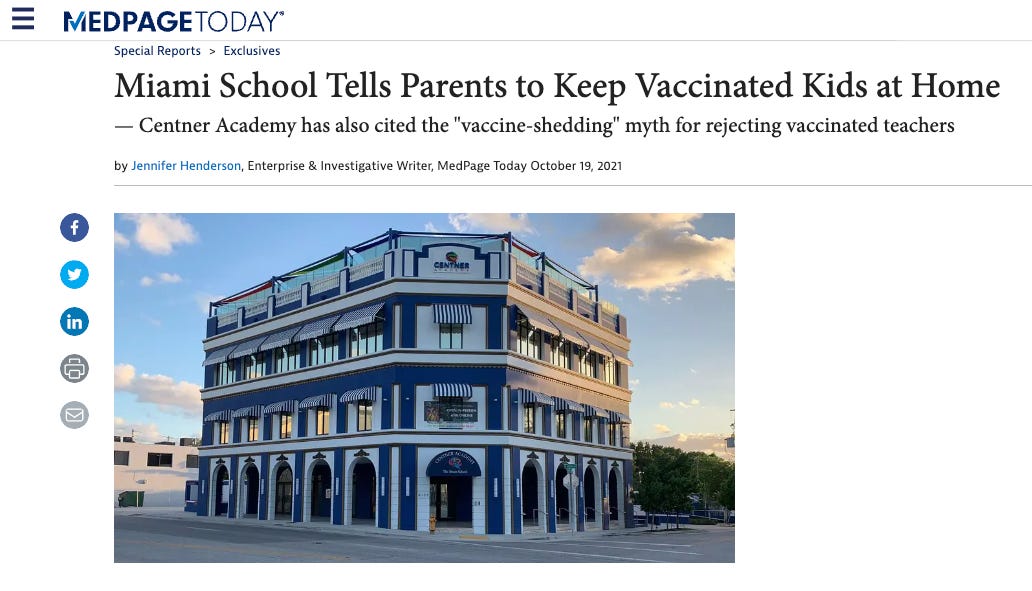

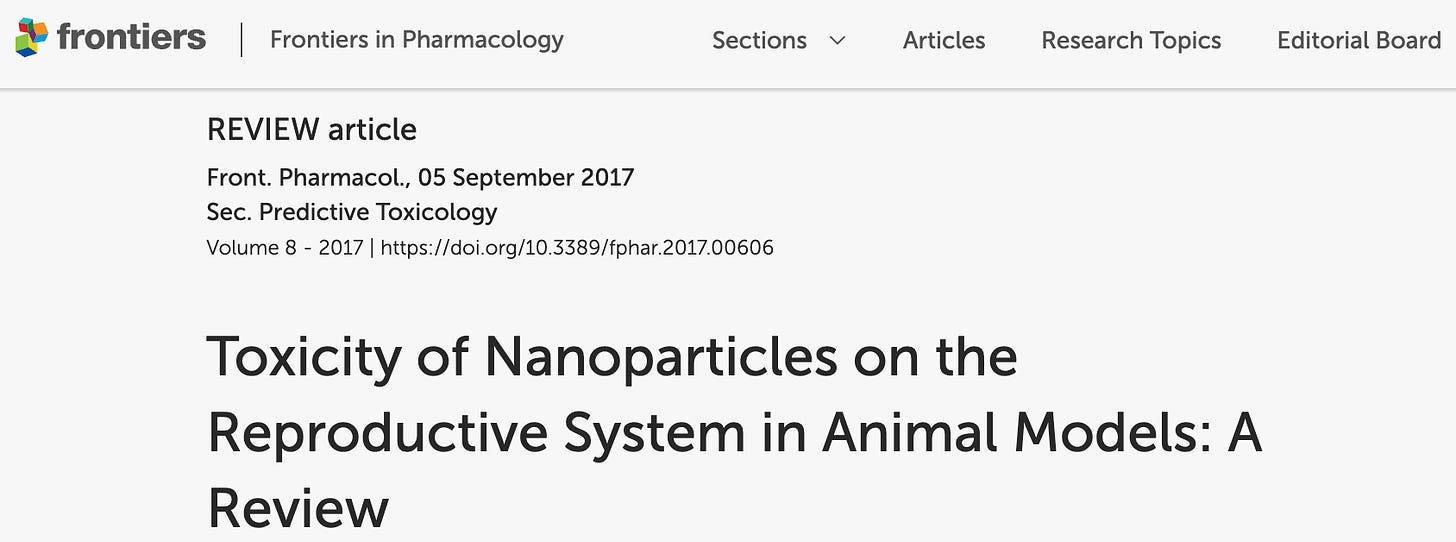
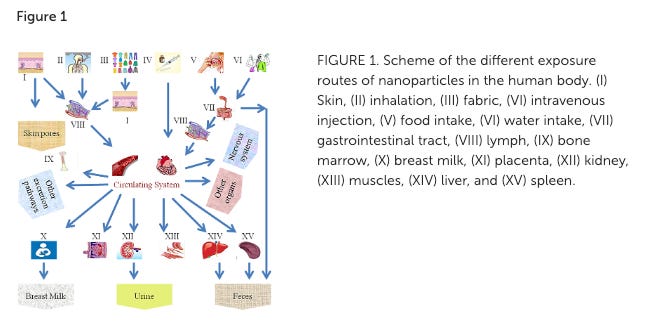
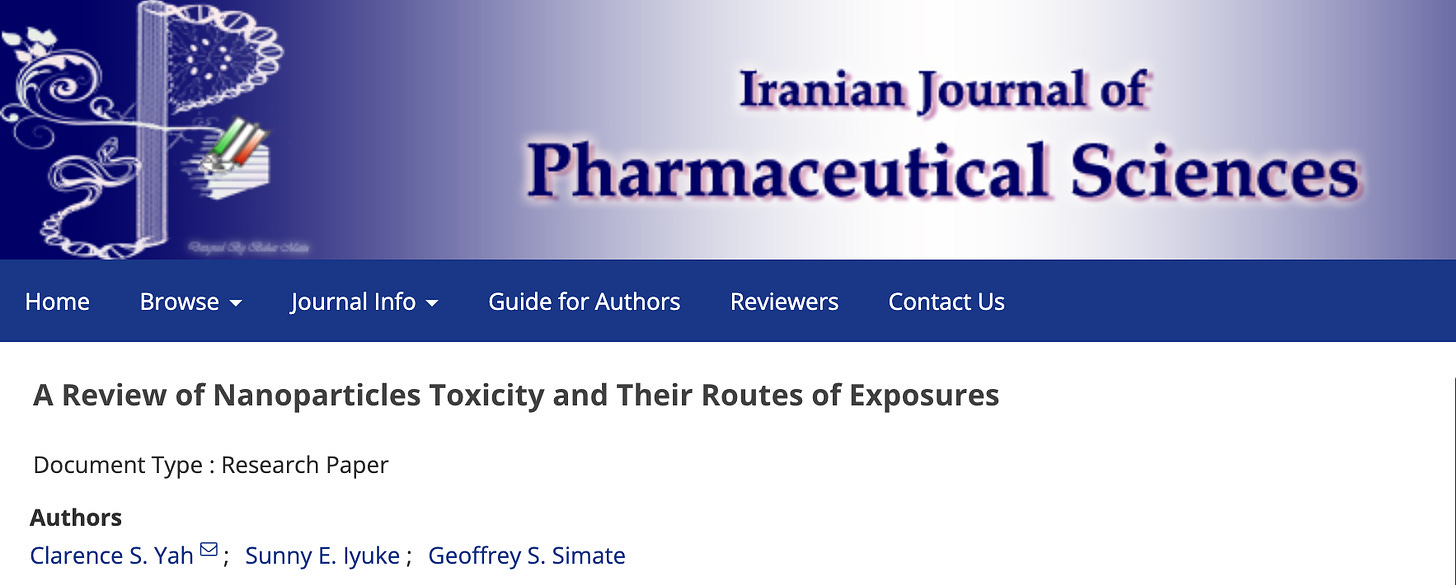






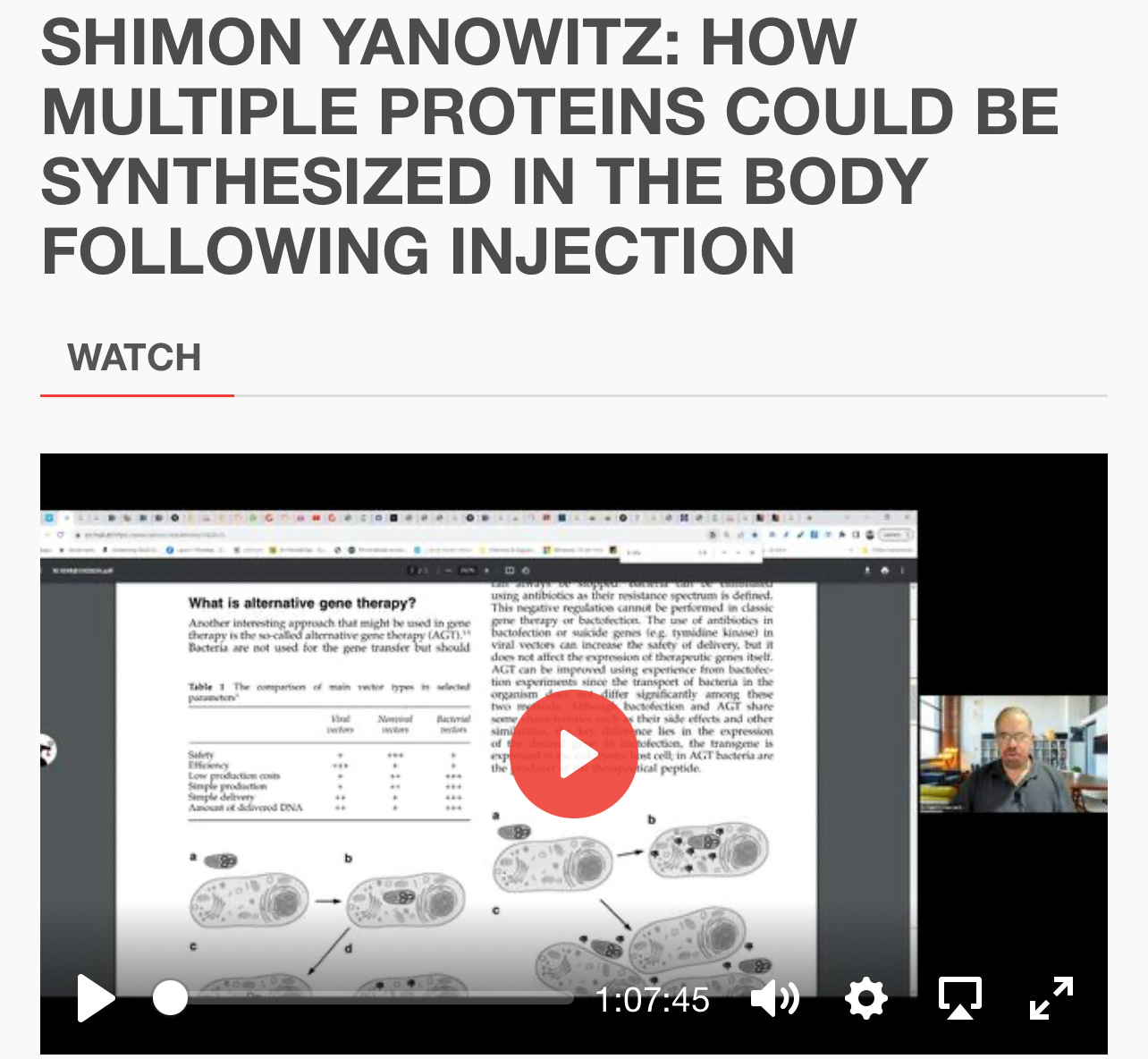
Can you add a "Buy a Koffee" option?
I want to support you but can't read you often (my time is not unlimited) and also can't pay as much as your subscription is worth (my funds are are not unlimited)
I bet a lot of us are in this situation and would very much like to support you albeit to a lesser degree.
Thank-you very much for the excellent breakdown of Dr. Kory's articles.